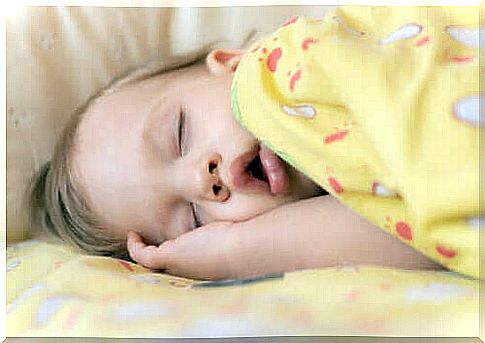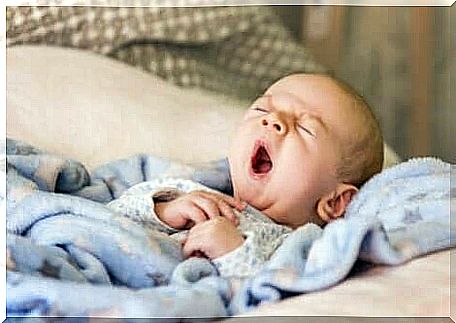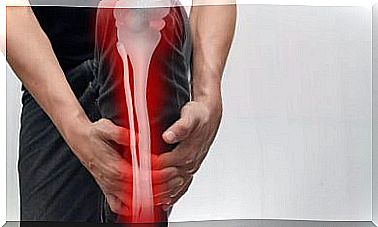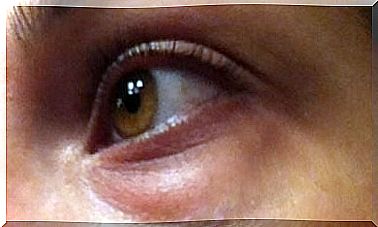Symptoms And Treatment Of Sleep Apnea In Babies

Sleep apnea in babies is a health problem that needs to be addressed. This kind of irregular snoring can actually be a serious breathing problem.
If the baby has sleep apnea, it can be worrying for the parents. First, it is important to know that the problem is about more than just snoring, and it often begins right after birth. But the breathing problem we will describe in today’s article most often occurs during periods of relaxation.
Obstructive sleep apnea in babies occurs when they stop breathing for a moment. This disturbance can be partial with a slight passage of air or completely without any oxygen uptake while on.
It is from there that the severity of the disease originates. Therefore , immediate attention and treatment is required. Too many bodily functions, including those in the brain, are disrupted when there is no entry and exit for the gases that are supposed to make the metabolism work.
Read on and find out more about this disorder and the possible treatments.
The causes of obstructive sleep apnea in babies
The background for this problem in young children lies in the anatomy of their upper respiratory tract. A child’s airway is smaller than an adult’s, and its limited diameter can collapse due to the flexibility of their trachea.
Some babies have a narrower upper airway than others either because of their own anatomy or because of recurrent infections. In addition, a restricted cartilage trachea is not the same as an enlarged tonsil.
One of the most common causes of this problem is tonsil hypertrophy. The defensive tissue of the gland can increase its size and prevent a good passage of air into the body, especially when lying down.
The shape of the lower jaw is also a risk factor. The shape of the entrance to the air in children with smaller facial bones is different and it is more difficult for the air to enter.
Obese babies have a doubly complicated factor. On the one hand, the fat that accumulates in the neck puts pressure on the trachea. On the other hand, the tongue grows larger and falls backwards when they sleep.
In addition, children with spastic paralysis are a case in point. This is because one of the hallmarks of this disease is a looser muscle tone that increases the tendency to block their airways.

There are various risk factors associated with sleep apnea in babies. Being overweight is one of them.
Clear symptoms of the disorder
The signs and symptoms of obstructive sleep apnea in babies concentrate on breathing. Snoring is the primary thing. These infants snore loudly and often as loudly as an adult.
At the same time, this snoring is most often accompanied by stopping breathing and the breathing rhythm. Apnea is when the breath is neither drawn in nor exhaled, and the automatic function of the lung function is temporarily out of order.
Parents or educators often discover this phenomenon, but sometimes it is not noticed. This does not mean that you have to constantly check if the little ones are now breathing when they are sleeping. But that means you have to pay attention once in a while, especially to how they sound.
Babies with obstructive sleep apnea breathe through their mouths instead of through their noses, as this method allows them to inhale a larger amount of air. This also dries out the mucous membranes of the pharynx and nose and gives increased thirst and more awakenings at night.
Long-term effects of obstructive sleep apnea in infants
What are the consequences of poor rest and poor oxygen uptake during sleep.
Babies with this disorder tend to be hyperactive throughout the day, requiring more calories. It can again delay a good weight gain if those calories are not ingested.
A baby with obstructive sleep apnea is also at risk for early changes in their incipient teeth. According to an article in the Revista de la Asociacion Mexicana , bruxism, the cutting of teeth, is more common among children with sleep problems.
There are also long-term consequences that reach all the way up through adolescence and adulthood for those who suffered from apnea as a child. They are at greater risk of developing high blood pressure and circulatory diseases. However, this is most prevalent among obese children.

Babies with sleep apnea are more often hyperactive during the day. Therefore, they burn more calories.
Possible treatments
The options for treating obstructive sleep apnea in babies are many and varied. And there is no complete agreement in medical circles as to which ones should be used in all cases. But among the possible strategies are:
- Nasal corticosteroids or medicines for local use against obstruction of the mucous membrane of the nose. It works in cases of rhinitis, and should always be prescribed by a doctor.
- Upper tonsillectomy or polyp removal is a good option for children with tonsillar hypertrophy.
- Hygiene and dietary measures can alleviate mild cases, so adjustments to these habits can be highly recommended. For example, it could be adjusting the baby’s position when lying down, their sleep pattern, distribution of meals, and how close the meals are to the baby’s bedtime.
- CPAP equipment is reserved for serious cases where the other alternatives have not helped. It consists of the introduction of air with overpressure through the airways, and thus oxygen is forced down into the lungs in an appropriate amount. This is usually the last resort.
Is obstructive sleep apnea in babies a reason to sound the alarm?
You should not panic if your child gets this diagnosis, but start treatment immediately. The infant’s developmental period is important because it forms the basis of the rest of their lives.
By dealing with problems quickly, you can avoid serious problems in the future. Your pediatrician can advise you on the best possible choice of treatment and what you can do in your daily life to improve the situation.









